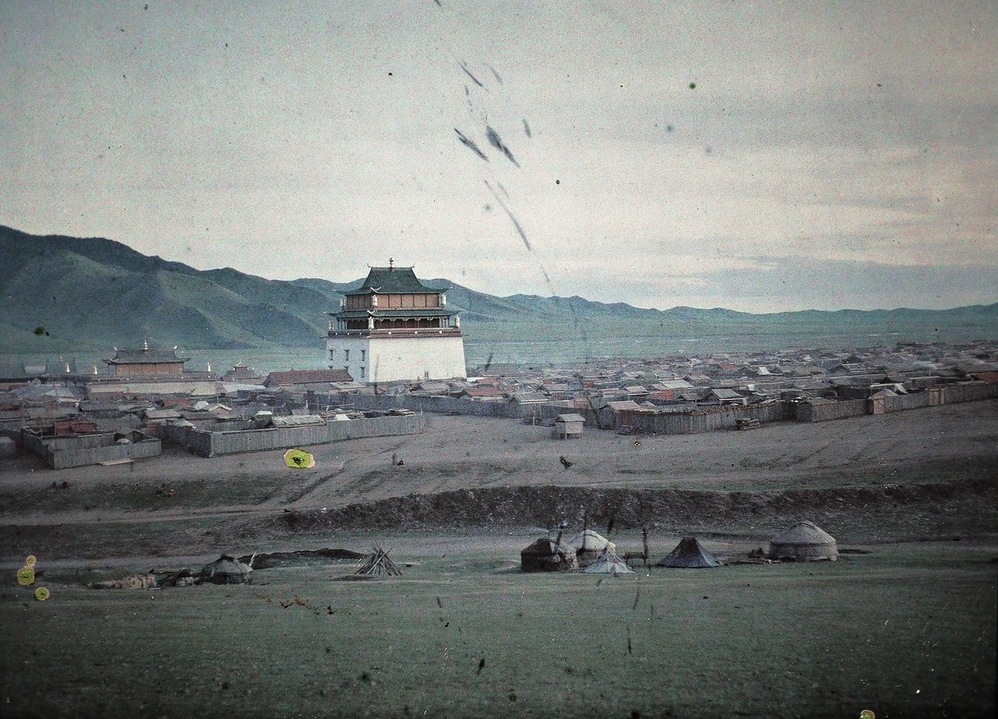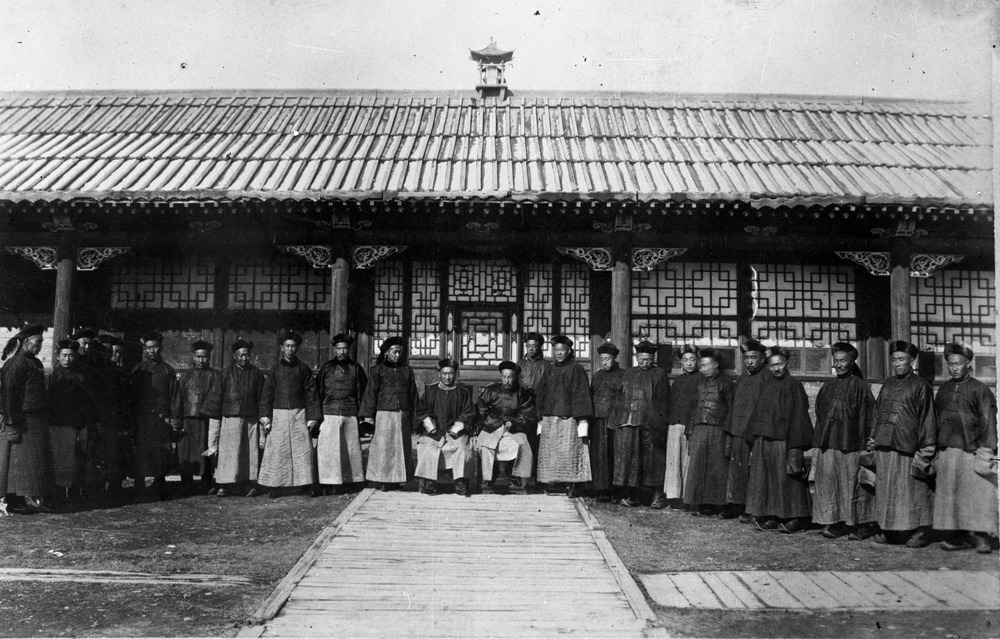|
Outer Mongolian Revolution Of 1911
The Mongolian Revolution of 1911 (Mongol: Үндэсний эрх чөлөөний хувьсгал, , ''Ündèsnij èrx čölöönij xuv’sgal'') occurred when the region of Outer Mongolia declared its independence from the Manchu-led Qing China during the Xinhai Revolution. A combination of factors including economic hardship and failure to resist Western imperialism led many in China to be unhappy with the Qing government. When a new program to settle Mongolia with ethnic Han and assimilate the natives was unveiled, it was met with resistance that resulted in a relatively bloodless separation from the Qing Empire. Many Barga and Inner Mongolian chieftains assisted in the revolution and became the revolution leaders. Background By the early 20th century, Mongolia was impoverished. Repercussions from the Taiping Rebellion (1850–1864) were primarily responsible for this economic deterioration. Loss of tax revenue from South China during the rebellion and expenses for its ... [...More Info...] [...Related Items...] OR: [Wikipedia] [Google] [Baidu] |
Outer Mongolia
Outer Mongolia was the name of a territory in the Manchu people, Manchu-led Qing dynasty of China from 1691 to 1911. It corresponds to the modern-day independent state of Mongolia and the Russian republic of Tuva. The historical region gained Mongolian Revolution of 1911, ''de facto'' independence from Qing China during the 1911 Revolution, Xinhai Revolution. While the administrative region of Outer Mongolia during the Qing dynasty only consisted of the four Khalkha Mongols, Khalkha aimags (Setsen Khan Aimag, Tüsheet Khan Aimag, Sain Noyon Khan Aimag, and Zasagt Khan Aimag), in the late Qing period "Outer Mongolia" was also used to refer to the combined Khalkha and Oirats, Oirat regions, as well as the directly-ruled Tannu Uriankhai. The region was subsequently claimed by the Republic of China (1912–1949), Republic of China, which had acquired the legal right to inherit all Qing territories through the Imperial Edict of the Abdication of the Qing Emperor, as an integral ... [...More Info...] [...Related Items...] OR: [Wikipedia] [Google] [Baidu] |
First Sino-Japanese War
The First Sino-Japanese War (25 July 1894 – 17 April 1895) was a conflict between China and Japan primarily over influence in Korea. After more than six months of unbroken successes by Japanese land and naval forces and the loss of the port of Weihaiwei, the Qing government sued for peace in February 1895. The war demonstrated the failure of the Qing dynasty's attempts to modernize its military and fend off threats to its sovereignty, especially when compared with Japan's successful Meiji Restoration. For the first time, regional dominance in East Asia shifted from China to Japan; the prestige of the Qing dynasty, along with the classical tradition in China, suffered a major blow. The humiliating loss of Korea as a tributary state sparked an unprecedented public outcry. Within China, the defeat was a catalyst for a series of political upheavals led by Sun Yat-sen and Kang Youwei, culminating in the 1911 Xinhai Revolution. The war is commonly known in China as the Wa ... [...More Info...] [...Related Items...] OR: [Wikipedia] [Google] [Baidu] |
Bogd Khan
Bogd Khan, , ; ( – 20 May 1924) was the khan of the Bogd Khaganate from 1911 to 1924, following the state's ''de facto'' independence from the Qing dynasty of China after the Xinhai Revolution. Born in Tibet, he was the third most important person in the Tibetan Buddhist hierarchy as the 8th Jebtsundamba Khutuktu, below only the Dalai Lama and Panchen Lama, and therefore also known as the "Bogdo Lama". He was the spiritual leader of Outer Mongolia's Tibetan Buddhism. His wife Tsendiin Dondogdulam, the Ekh Dagina ('Dakini Mother'), was believed to be a manifestation of White Tara. Life The future Bogd Khan was born in 1869 in the area of Lhasa, in a family of a Tibetan official. He was born as Agvaan Luvsan Choijinnyam Danzan Vanchüg. His father, Gonchigtseren, was an accountant at the 12th Dalai Lama's court. The boy was officially recognized as the new incarnation of the Bogd Gegen in Potala in the presence of the 13th Dalai Lama and the Panchen Lama. The new Bog ... [...More Info...] [...Related Items...] OR: [Wikipedia] [Google] [Baidu] |
Gandantegchinlen Khiid Monastery
The Gandantegchinlen Monastery ( mn, Гандантэгчинлэн хийд, ''Gandantegchinlen khiid'', short name: Gandan mn, Гандан) is a Mongolian Buddhist monastery in the Mongolian capital of Ulaanbaatar that has been restored and revitalized since 1990. The Tibetan name translates to the "Great Place of Complete Joy". It currently has over 150 monks in residence. It features a 26.5-meter-high statue of Avalokiteśvara. It came under state protection in 1994. History The monastery was constructed by order of the 5th Jebtsundamba Khutuktu in 1809. The first temple was the Gungaachoilin Datsan. Only one wooden pillar remains from this temple. In 1838, the Gandantegchenlin Temple was built along with the private residence of the Jebtsundamba Khutuktu. The 13th Dalai Lama stayed in the residence in 1904. In 1840, the Vajradhara Temple was built. In 1869, the Zuu Temple was built. In 1913, the tall Avalokiteśvara temple was built. In 1925, the temple for keeping the re ... [...More Info...] [...Related Items...] OR: [Wikipedia] [Google] [Baidu] |
Lama
Lama (; "chief") is a title for a teacher of the Dharma in Tibetan Buddhism. The name is similar to the Sanskrit term ''guru'', meaning "heavy one", endowed with qualities the student will eventually embody. The Tibetan word "lama" means "highest principle", and less literally "highest mother" or "highest parent" to show close relationship between teacher and student."lama" from Historically, the term was used for venerated spiritual masters or heads of monasteries. Today the title can be used as an [...More Info...] [...Related Items...] OR: [Wikipedia] [Google] [Baidu] |
Ulaanbaatar
Ulaanbaatar (; mn, Улаанбаатар, , "Red Hero"), previously anglicized as Ulan Bator, is the capital and most populous city of Mongolia. It is the coldest capital city in the world, on average. The municipality is located in north central Mongolia at an elevation of about in a valley on the Tuul River. The city was originally founded in 1639 as a nomadic Buddhist monastic center, changing location 28 times, and was permanently settled at its current location in 1778. During its early years, as Örgöö (anglicized as Urga), it became Mongolia's preeminent religious center and seat of the Jebtsundamba Khutuktu, the spiritual head of the Gelug lineage of Tibetan Buddhism in Mongolia. Following the regulation of Qing-Russian trade by the Treaty of Kyakhta in 1727, a caravan route between Beijing and Kyakhta opened up, along which the city was eventually settled. With the collapse of the Qing Empire in 1911, the city was a focal point for independence efforts, lead ... [...More Info...] [...Related Items...] OR: [Wikipedia] [Google] [Baidu] |
Sando (official)
Sando (alternately Sanduo, San To, Sadowo; ; mn, Сандо; 1876-1941), courtesy name Liuqiao (), was an official of the Qing dynasty and later the Republic of China who most served as the 62nd and last Qing '' Amban'' (昂邦 ; Resident Commissioner) of Outer Mongolia from 1909 to 1911. Although ethnically a Mongol, Sando's aggressive implementation of Beijing ordered reforms, including increased immigration of ethnic Han to the area and a rapid buildup of a sinicized military to fend off growing Russian influence, aggravated Mongols and precipitated moves by Khalkha nobles to declare independence from China in 1911. Early life Sando was born in 1876 in Hangzhou, Zhejiang Province, as a member of the Plain White Mongol Banner. He studied under the prominent Chinese scholar Yu Yue, and later became a scholar himself. He is also believed to have studied in Japan for a period. At a young age he entered the Manchu civil service and held several high level civil and military ... [...More Info...] [...Related Items...] OR: [Wikipedia] [Google] [Baidu] |
Liaodong Peninsula
The Liaodong Peninsula (also Liaotung Peninsula, ) is a peninsula in southern Liaoning province in Northeast China, and makes up the southwestern coastal half of the Liaodong region. It is located between the mouths of the Daliao River (the historical lower section of the Liao River) in the west and the Yalu River in the east, and encompasses the territories of the whole sub-provincial city of Dalian and parts of prefectural cities of Yingkou, Anshan and Dandong. The word "Liaodong" literally means "Liao region's east", referring initially to the Warring States period Yan commandery of Liaodong, which encompassed an area from modern Liaoning- Jilin border in the north to the Chongchon River on the Korean Peninsula in the south, and from just east of the Qian Mountains to a now-disappeared large wetland between the western banks of middle Liao River and the base of Yiwulü Mountain, historically known as the "Liao Mire" (遼澤, ''Liáo zé'') roughly in b ... [...More Info...] [...Related Items...] OR: [Wikipedia] [Google] [Baidu] |
Cultural Assimilation
Cultural assimilation is the process in which a minority group or culture comes to resemble a society's majority group or assume the values, behaviors, and beliefs of another group whether fully or partially. The different types of cultural assimilation include full assimilation and forced assimilation; full assimilation being the most prevalent of the two, as it occurs spontaneously. During cultural assimilation, minority groups are expected to adapt to the everyday practices of the dominant culture through language and appearance as well as via more significant socioeconomic factors such as absorption into the local cultural and employment community. Some types of cultural assimilation resemble acculturation in which a minority group or culture completely assimilates into the dominant culture in which defining characteristics of the minority culture are less obverse or outright disappear; while in other types of cultural assimilation such as cultural integration mostly fou ... [...More Info...] [...Related Items...] OR: [Wikipedia] [Google] [Baidu] |
New Policies
Late Qing reforms (), commonly known as New Policies of the late Qing dynasty (), or New Deal of the late Qing dynasty, simply referred to as New Policies, were a series of cultural, economic, educational, military, and political reforms implemented in the last decade of the Qing dynasty to keep the dynasty in power after the invasions of the great powers of the Eight Nation Alliance in league with the ten provinces of the Southeast Mutual Protection in the Boxer Uprising. Late Qing reforms started in 1901, and since they were implemented with the backing of the Empress Dowager Cixi, they are also called Cixi's New Policies. Names In China, the reform is most commonly known as New Policies of the late Qing dynasty (清末新政), and is also called Gengzi New Policies (庚子新政), Post-Gengzi New Policies (庚子后新政). After the fall of the Qing Dynasty, in the Republic of China, it was called "Shame-covering reforms" (遮羞变法). In Hong Kong, it was called Late Qi ... [...More Info...] [...Related Items...] OR: [Wikipedia] [Google] [Baidu] |








